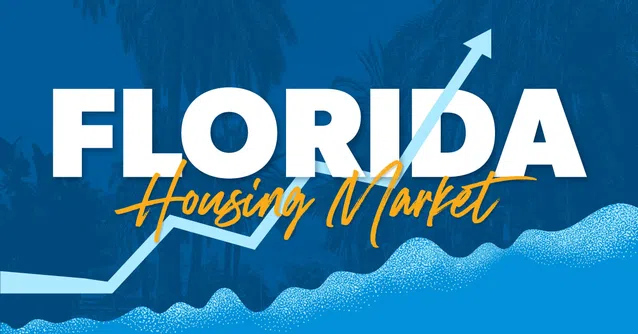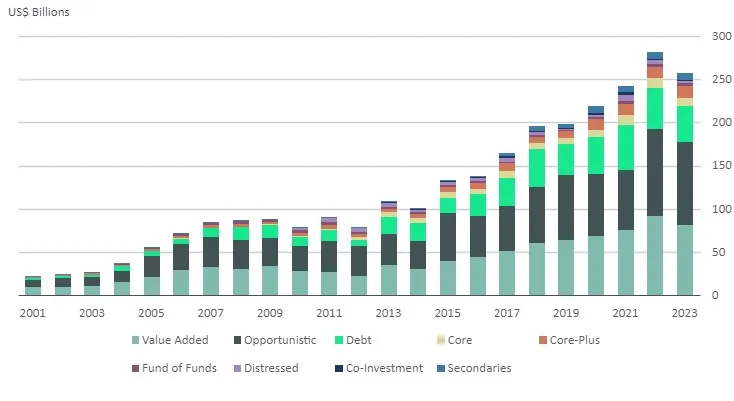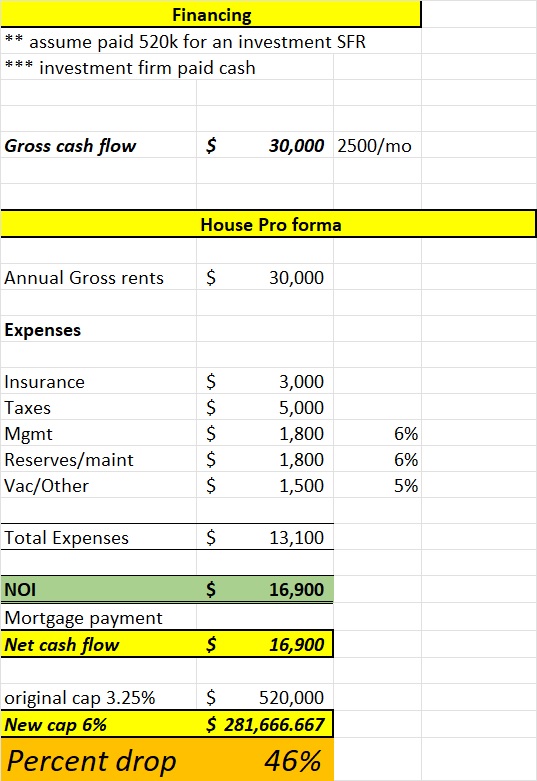How to Maximize Returns on Investment Properties; Best High-ROI Home Improvements Buyers Love
To maximize returns on investment properties, real estate investors should focus on thoughtful, high-impact rehab improvements that enhance both functionality and appeal, moving beyond simple cosmetic fixes, and cater to evolving buyer trends.
Here’s a breakdown of why and how:
Why Strategic Rehab Matters:
- Increase Property Value:Well-executed rehab projects can significantly boost a property’s market value, making it more attractive to potential buyers and commanding a higher price.
- Faster Sales:A move-in-ready, updated property often sells faster, as it meets buyers’ expectations for a desirable home.
- Attracts More Buyers:Thoughtful upgrades create a warm, inviting atmosphere that resonates with potential buyers, making them more likely to fall in love with the property.
- Enhanced Tenant Experience:For rental properties, rehab can improve tenant satisfaction and reduce turnover, leading to higher rental income and property value.
Focus Areas for Rehab Upgrades:
- Functionality:
- Kitchen and Bathrooms: These are often the first areas buyers focus on, so upgrades like modern appliances, updated cabinetry, and stylish fixtures can make a big impact.
- Flooring: Consider replacing outdated or damaged flooring with durable and aesthetically pleasing options.
- Lighting: Ensure adequate and well-placed lighting, both natural and artificial, to create a bright and inviting space.
- Storage: Address storage issues with smart storage solutions like built-in shelving or closets.
- Appeal:
- Exterior: Address any issues with the exterior, such as painting, landscaping, or replacing siding.
- Interior: Focus on creating a warm and inviting atmosphere with neutral color palettes, updated trim, and stylish fixtures.
- Smart Home Features: Consider adding smart home features like smart thermostats, security systems, or lighting controls, which can be a major draw for buyers.
- Market Trends:
- Sustainability: Incorporate eco-friendly features like energy-efficient appliances, water-saving fixtures, or green certifications, which are increasingly popular with buyers.
- Open Concept: Consider creating or enhancing open-concept spaces to maximize flow and functionality.
- Outdoor Spaces: Focus on creating functional and attractive outdoor spaces, such as patios, decks, or gardens, which can be a major selling point.
- First Impressions:
- Curb Appeal: A well-maintained and attractive exterior is crucial for making a good first impression.
- Cleanliness: Ensure the property is spotless and free of clutter to create a positive impression.
- Ambiance: Use lighting, color, and decor to create a warm and inviting atmosphere.
Key notes
- How to increase home value
- The Right Curb Appeal Could Create Love at First Sight For Buyers
- Flooring Upgrades That Add Value And Style To Your Home
The Right Curb Appeal Could Create Love at First Sight For Buyers
Yes, the right curb appeal can indeed create a “love at first sight” effect for potential buyers, as a well-maintained and visually appealing exterior can significantly impact a buyer’s initial impression and increase the perceived value of a property.
Here’s why curb appeal matters and some ways to enhance it:
Why Curb Appeal Matters:
- First Impressions are Crucial:Curb appeal is a home’s first impression, and it often determines whether a buyer will even bother to step inside.
- Increased Value:A home with strong curb appeal can command higher prices and sell faster.
- Attracts More Buyers:A visually appealing exterior can attract more potential buyers, making it easier to find a qualified offer.
- Competitive Advantage:In a competitive market, a home with excellent curb appeal can stand out from the crowd and attract more attention.
- Higher Return on Investment:Enhancing curb appeal can be a relatively inexpensive way to increase a property’s value and potentially lead to a higher return on investment.
Ways to Enhance Curb Appeal:
- Landscaping:A well-maintained lawn, attractive flowerbeds, and strategically placed trees or shrubs can make a big difference.
- Exterior Paint:Fresh paint in a neutral or appealing color can instantly brighten up a home’s exterior.
- Door and Window Upgrades:Consider replacing old or damaged doors and windows with new ones that are energy-efficient and visually appealing.
- Cleanliness:Power washing the exterior of the house, driveway, and walkways can remove dirt and grime, making the property look cleaner and more inviting.
- Lighting:Ensure that the exterior lighting is functional and attractive, highlighting the front of the house and walkways.
- Address Numbers and Mailboxes:Make sure that address numbers are clearly visible and that the mailbox is in good condition.
- Porch and Deck:A well-maintained porch or deck with comfortable seating and attractive decorations can add to the curb appeal.
- Tidy Up:Remove any clutter or debris from the yard and ensure that the property is well-maintained.
Flooring Upgrades That Add Value And Style To Your Home
Replacing outdated or worn flooring with modern, durable materials can significantly enhance a home’s appeal and resale value, creating a cleaner, more inviting atmosphere that potential buyers will notice immediately.
Here’s why flooring upgrades are important for investment properties:
- First Impressions Matter:Flooring is one of the first things buyers notice when viewing a property, and its condition can heavily influence their perception of the entire home.
- Outdated Flooring Can Deter Buyers:Worn-out carpet, scratched hardwood, or outdated tile can make a property feel old and unappealing, potentially causing buyers to lose interest.
- Modern Flooring Creates a Positive Atmosphere:Replacing old flooring with modern, durable materials can create a fresh, clean, and well-maintained look that attracts buyers.
- Increased Resale Value:New flooring can significantly increase a property’s resale value, as buyers are often willing to pay more for a home with updated and attractive flooring.
- Durable Materials Offer Longevity:Opting for durable materials like hardwood, tile, or laminate can ensure that the new flooring will withstand heavy use and maintain its appearance for years to come.
- Flooring Types and Their Benefits:
- Hardwood: Hardwood floors are a timeless classic that can add a touch of elegance and sophistication to any home.
- Tile: Tile flooring is durable, easy to clean, and comes in a wide variety of colors and styles.
- Laminate: Laminate flooring is a cost-effective alternative to hardwood that is also durable and easy to maintain.
- Consider Your Home’s Style:When choosing new flooring, it’s important to consider the overall style of your home and choose a material that complements
Small Kitchen Changes Could Make Buyers Fall in Love at First Bite
You’re absolutely right, a few strategic kitchen upgrades can significantly enhance a space without requiring a full renovation!Updating lighting, hardware, or even a backsplash can make a big difference in creating a modern and welcoming kitchen.
Here’s a breakdown of why and how:
Why these upgrades matter:
- Modernization:Outdated elements like old-fashioned lighting or hardware can make a kitchen feel dated and less appealing.
- Enhanced Functionality:New lighting can improve task lighting and overall ambiance, while updated hardware can make cabinets and drawers easier to use.
- Increased Value:These upgrades can add value to your home, both aesthetically and practically.
- Affordability:These upgrades are often less expensive than a full kitchen remodel.
Specific upgrades to consider:
- Lighting:
- Replace outdated fixtures:Consider modern or industrial-style pendant lights, recessed lighting, or under-cabinet lighting.
- Install dimmer switches: This allows you to adjust the lighting to create different moods.
- Hardware:
- Replace cabinet knobs and pulls:Choose hardware that complements your style and cabinet design.
- Upgrade drawer pulls: Consider sleek, modern options for a more contemporary look.
- Backsplash:
- Install a new backsplash: A backsplash can add a pop of color or texture to your kitchen.
- Consider peel-and-stick tiles:These are easy to install and can be a budget-friendly option.
- Other ideas
- Countertop resurfacing: This can give your countertops a fresh look without the expense of full replacement.
- Paint or wallpaper: Changing the paint color or adding wallpaper can refresh the backdrop.
- Add open shelving: This can create a more airy and modern look.
- Update flooring: Consider wood plank tile or luxury vinyl plank (LVP) for a modern look
How Bathroom Remodels Impact Home Value
Simple bathroom upgrades like a filtered rainfall showerhead, a sleek floating vanity, and updated lighting can transform small or outdated spaces into luxurious retreats without a full remodel.
Here’s a breakdown of how these upgrades can make a difference:
1. Showerhead Upgrade:
- Filtered Rainfall Showerhead:A rainfall showerhead provides a spa-like experience, and incorporating a filter can improve water quality and skin health.
- Benefits:
- Relaxation: The gentle, wide spray of a rainfall showerhead can be incredibly relaxing.
- Water Quality: A filter can remove impurities and chlorine, leading to softer water and healthier skin and hair.
- Aesthetic Appeal: Modern rainfall showerheads often have sleek, contemporary designs that enhance the bathroom’s look.
2. Vanity Upgrade:
- Sleek Floating Vanity: A floating vanity creates a sense of spaciousness and modern elegance.
- Benefits:
- Aesthetic Appeal: Floating vanities have a clean, minimalist look that can elevate the bathroom’s style.
- Space Optimization: By mounting the vanity to the wall, you gain floor space, making the bathroom feel larger.
- Easy Cleaning: Floating vanities are easy to clean, as there’s no base to collect dust and debris.
3. Lighting Upgrade:
- Contemporary or Energy-Efficient Fixtures:Updating lighting fixtures with modern designs and energy-efficient LED bulbs can brighten the space and save money.
- Benefits:
- Enhanced Ambiance:Contemporary lighting can create a more sophisticated and relaxing atmosphere.
- Energy Savings: LED bulbs use significantly less energy than traditional incandescent bulbs, saving money on electricity bills.
- Longer Lifespan: LED bulbs last much longer than traditional bulbs, reducing the need for frequent replacement.
WHAT ENERGY-EFFICIENT UPGRADES ARE BUYERS LOOKING FOR
To make your home more appealing to buyers in 2025, consider smart and energy-efficient upgrades like energy-efficient appliances, solar panels, programmable thermostats, LED lighting, energy-saving windows, and upgraded HVAC systems.
Here’s a breakdown of those and other smart and energy-efficient upgrades that can boost your home’s appeal:
Appliance Upgrades:
- Energy-Efficient Appliances:Replacing older appliances with energy-efficient models (refrigerators, washing machines, dishwashers) can save buyers money on utility bills, making your home more attractive.
- Smart Appliances:Consider appliances with smart features like Wi-Fi connectivity and remote control, which can add convenience and appeal to modern buyers.
Smart Home Features:
- Programmable or Smart Thermostats:These allow buyers to control their home’s temperature remotely and save energy, a popular feature for modern buyers.
- Smart Lighting:Invest in smart lighting systems that can be controlled via voice or app, adding convenience and a touch of luxury.
- Smart Security Systems:A modern security system with smart features like motion sensors, cameras, and remote access can enhance security and appeal to buyers.
Energy Efficiency Improvements:
- Solar Panels:Solar panels can reduce or eliminate electricity bills, making your home more sustainable and appealing to eco-conscious buyers.
- Insulation:Ensure your home has proper insulation to reduce energy consumption and maintain a comfortable temperature year-round.
- Energy-Saving Windows:Upgrade to energy-efficient windows with features like double or triple glazing and low-emissivity coatings to minimize heat loss and gain.
- Upgraded HVAC Systems:A modern, energy-efficient HVAC system can save buyers money and provide better comfort, making it a valuable selling point.
- Attic Ventilation:Ensure your attic has proper ventilation to prevent moisture buildup and improve energy efficiency.
- Air Sealing and Insulation:Air sealing and insulation work together to prevent drafts and improve energy efficiency, which is a significant selling point.
- Exterior Siding:New siding can enhance curb appeal and improve energy efficiency, making your home more attractive to buyers.
Turn a Flip Into a Home With Muevo
Upgrading an investment property requires careful planning and smart choices to maximize ROI without depleting your cash reserves, focusing on cost-effective upgrades and smart financing options.
Here’s how you can upgrade an investment property without depleting your cash reserves:
1. Prioritize High-Impact, Cost-Effective Upgrades:
- Focus on Kitchen and Bath Remodels:These are often the most impactful areas for increasing property value and tenant appeal.
- Choose Durable and Attractive Flooring:Opt for long-lasting options that are both aesthetically pleasing and easy to maintain.
- Improve Energy Efficiency:Upgrades like new windows, insulation, and smart thermostats can reduce long-term operating costs and attract environmentally conscious tenants.
- Consider Smart Home Technology:Simple, cost-effective tech upgrades like smart locks, security systems, and automated lighting can enhance the property’s appeal and safety.
2. Smart Financing Strategies:
- Home Equity Lines of Credit (HELOCs):HELOCs can provide flexible financing for renovations, allowing you to borrow against your existing property equity.
- Personal Loans:If you have good credit, a personal loan can be another option to fund renovations.
- Hard Money Loans:These are short-term loans from private investors, often used for quick flips or renovations before refinancing.
- Cash-Out Refinance:Refinance your existing mortgage to take out a larger loan and pocket the difference for renovations.
- Consider a HELOC:A HELOC is a revolving credit line that allows you to withdraw funds as needed, similar to a credit card.
3. Build a Strong Cash Reserve:
- Regularly Allocate Funds:Set aside a portion of your rental income each month to build a reserve fund for unexpected repairs and maintenance.
- Review and Adjust:Periodically review your reserve fund to ensure it’s adequate to cover potential expenses and adjust as needed.
- Document Everything:Keep detailed records of all expenses, including repairs, maintenance, and upgrades, to track your spending and budget effectively.
- Consult Professionals:Seek advice from property managers or financial advisors to determine the optimal reserve fund level for your specific situation.
- Consider a Rent Guarantee:Some services offer rent guarantees to help reduce the financial risks of renting and protect your income during periods of vacancy.







